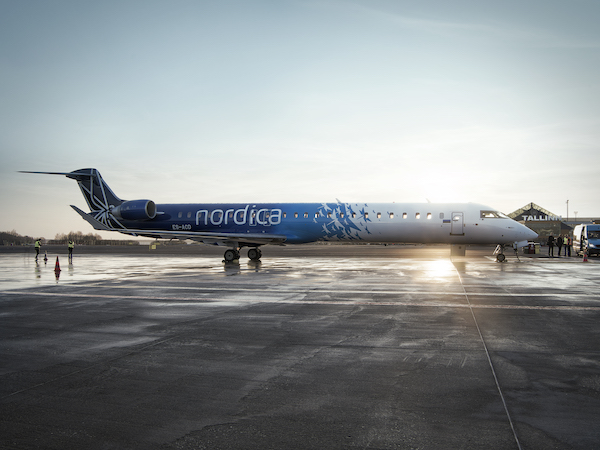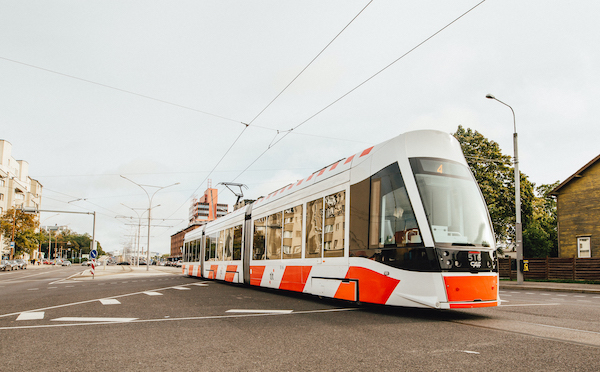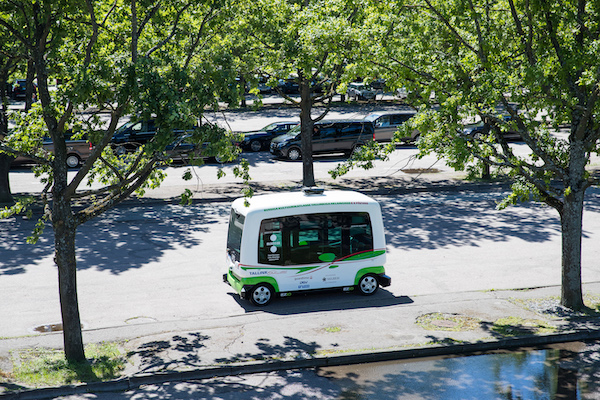By plane
 The biggest international airport in Estonia is located in Tallinn and you can fly direct from most major cities in Europe. Tallinn Airport is located just 3 km from the city centre and is currently serving 20 flight routes. Furthermore, Riga International Airport in Latvia is connected to over 80 destinations and it cooperates with more than 20 airlines. There are both flight and bus connections from Riga Airport to Tartu and Tallinn.
The biggest international airport in Estonia is located in Tallinn and you can fly direct from most major cities in Europe. Tallinn Airport is located just 3 km from the city centre and is currently serving 20 flight routes. Furthermore, Riga International Airport in Latvia is connected to over 80 destinations and it cooperates with more than 20 airlines. There are both flight and bus connections from Riga Airport to Tartu and Tallinn.
Information about airlines, schedules and customs is also available on the homepage of Lennart Meri Tallinn Airport. Information about direct flights to Tartu is available on the homepage of Tartu Airport.
By ship
 Estonian capital Tallinn is a seaside city with plenty of options available if you like to travel by sea. You can come to Estonia by ship from Helsinki and Stockholm and, additionally, from Rostock and St. Petersburg in the summer. Helsinki is a mere hour and a half away on an express ship in the summer and larger ships will take you there in 4 hours throughout the year. The main ferry operators are Tallink, Viking Line and Eckerö Line:
Estonian capital Tallinn is a seaside city with plenty of options available if you like to travel by sea. You can come to Estonia by ship from Helsinki and Stockholm and, additionally, from Rostock and St. Petersburg in the summer. Helsinki is a mere hour and a half away on an express ship in the summer and larger ships will take you there in 4 hours throughout the year. The main ferry operators are Tallink, Viking Line and Eckerö Line:
- Helsinki port in Finland is 80 km from Tallinn and it takes less than 2 hours on a ferry. During the summer season (from May to September), boats sail every few hours.
- Stockholm ports in Sweden are 380 km from Tallinn and ferries travel once a day in both directions (you spend the night at sea).
By bus and train
 International coach lines connect Tallinn and Tartu to Europe, and trains travel eastward. Two coach companies, Luxexpress and Ecolines, operate comfortable direct connections to all the biggest cities in Germany, Poland, Netherlands, and the Baltic States, as well as Russia, Ukraine and even further afield.
International coach lines connect Tallinn and Tartu to Europe, and trains travel eastward. Two coach companies, Luxexpress and Ecolines, operate comfortable direct connections to all the biggest cities in Germany, Poland, Netherlands, and the Baltic States, as well as Russia, Ukraine and even further afield.
- Tallinn Bus Terminal (bussijaam) in Tallinn is also the starting point of coaches to every corner of Estonia. You can reach the city centre from the terminal with trams 2 or 4 heading up the Tartu maantee.
- The train station (raudteejaam) in Tallinn – “Balti jaam” – is literally across the street from the Old Town. Only one international train line operates in Estonia: from Russia, Moscow (Leningradski Vakzal/Station). It travels on a daily basis and the journey lasts about 15 hours. Unfortunately, it is not possible to take a train to Europe, but for travelling in Estonia, rail transport is one of the most comfortable forms of transport. Elron is a public transport company, organising all passenger train transport in Estonia.
Inner city transportation
 Tallinn – A ticket purchased from the driver (at the price of €2.00) will grant you the right for one ride. Tallinn public transport ticket information and fares are published on their website, you can also easily check schedules of public transport by vehicle/stops. For international students who have registered their place of stay as Tallinn (City District Government Office) and acquired a smartcard for transport, public transportation is free of charge.
Tallinn – A ticket purchased from the driver (at the price of €2.00) will grant you the right for one ride. Tallinn public transport ticket information and fares are published on their website, you can also easily check schedules of public transport by vehicle/stops. For international students who have registered their place of stay as Tallinn (City District Government Office) and acquired a smartcard for transport, public transportation is free of charge.
There are also bicycles and electric scooters (Bolt and Tuul) available for rent throughout Tallinn city centre and areas around it during summer time. To use the scooters or bikes, just download the corresponding app, scan the scooter/bike and start riding. Make sure you check the map in the app to make sure where you can leave the bike/scooter.
Tartu – A ticket purchased from the driver (at the price of €2) will grant you the right for one ride. Public transport ticket information and fares are published on their website, you can also check out schedules of public transport by route/stops. University students are offered a discount when buying a single ticket, 10-day ticket or 30-day ticket (valid upon presentation of a school or university student card).
Tartu also has a Smart Bike Share system with 750 bikes (510 electrical, 240 regular) in 69 stations across the city.
Membership prices: 30€ (annual membership), 10€ (weekly membership), 5€ (daily membership). All memberships include unlimited 60-minute rides, which means you can ride as many times per day as you wish, and the first 60 minutes of each ride are included in the membership fee. Rides longer than 60 minutes are subject to extended use charges (€ 1 per every additionally started 60 minutes). For more information about Tartu Smart Bike Share visit the webpage ratas.tartu.ee.
Taxis and ride-sharing
 You will find a perpetual stream of taxis outside the arrival hall in airports and Port of Tallinn. For a price example, a quick, 7–10 minute taxi ride from the airport to the city centre in Tallinn would cost you approximately 5–10 EUR regardless of the number of passengers or baggage. Be careful to avoid "pirate taxis" - people who approach you in the terminal and offer to take you where you need to go. Often they drive in unmarked cars and will charge you a higher rate. You can also order a ride-sharing service.
You will find a perpetual stream of taxis outside the arrival hall in airports and Port of Tallinn. For a price example, a quick, 7–10 minute taxi ride from the airport to the city centre in Tallinn would cost you approximately 5–10 EUR regardless of the number of passengers or baggage. Be careful to avoid "pirate taxis" - people who approach you in the terminal and offer to take you where you need to go. Often they drive in unmarked cars and will charge you a higher rate. You can also order a ride-sharing service.
How to order a taxi or ride-sharing service?
- Download a ride-sharing app (Uber, Bolt) on your phone
- In Tartu, call any of the numbers listed on the City Government Website
- In Tallinn, the most common taxi companies are Forus Takso, Tallink Takso or Takso24
What to keep in mind when travelling by taxi:
- Choose a clearly marked taxi (takso).
- According to Estonian law, taxis are required to publish their full price list on the passenger side window and customers are allowed to choose whichever taxi they prefer, regardless of their position in the line.
- You can usually pay in cash or with a bank card. Please confirm bank card option before you enter the taxi.
- After the taxi ride, ask also for the receipt if you want – drivers are obligated to issue the receipt if asked. If you are not provided a receipt upon requesting one, you are not obligated to pay.
Customs when entering Estonia
On arrival and departure, a traveler must declare goods that are liable for import duties and taxes or import restrictions at customs. International students usually do not enter or leave Estonia with anything prohibited or liable for import taxes, but in order to prevent any possible misunderstandings, it is reasonable to ask for additional information before leaving from the local customs office or from the customs information desk or get more information from the web site of the Estonian Tax and Customs Board.
